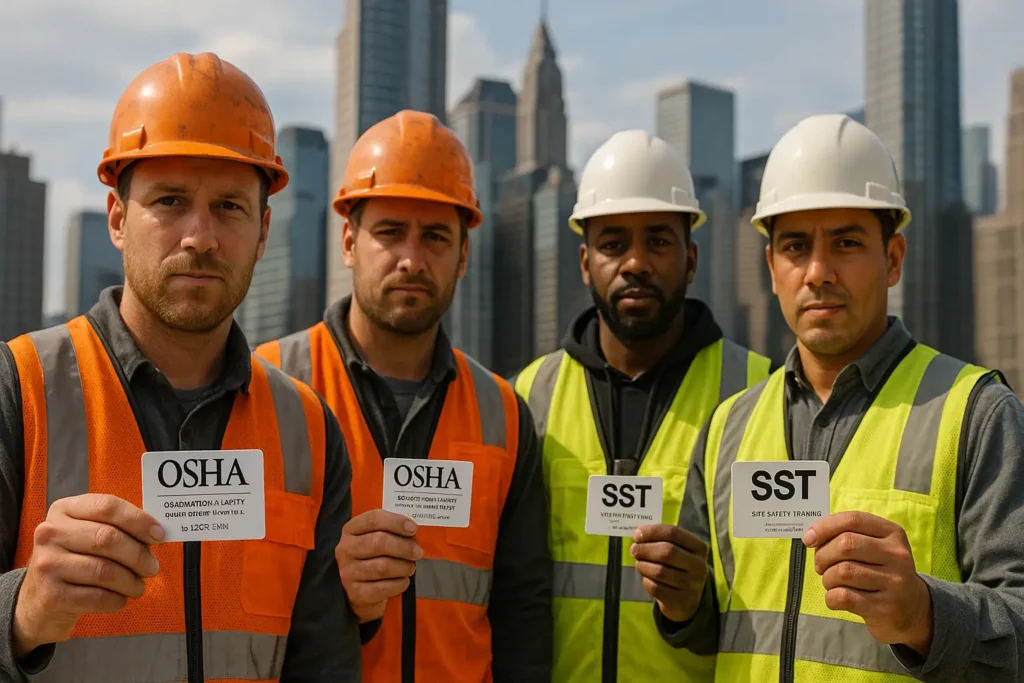Toolbox Talks Explained: The 5-Minute Safety Meetings That Prevent Accidents
Updated on:
Published on:
August 26, 2025
What is a Toolbox Talk? Definition, Purpose & Key Topics
A short, informal safety meeting held at the job site to address specific hazards, tasks, or safety practices.
Why Toolbox Talks Matter
Back in times, particularly in the construction industry, workers used to sit around their toolboxes and discuss the safety protocols for the ongoing operations at the start of the shift. Over the years, it became a mandatory practice to avoid hazards and to build a safer workplace. Unlike lengthy training sessions, Toolbox Talks are quick, focused, and tailored to the day’s work activities. They are important because they keep safety fresh in employees’ minds, encourage open discussion, and help prevent accidents before tasks begin. Toolbox Talks also build a culture of accountability, reminding workers that safety is a shared responsibility. While formal training provides in-depth knowledge, Toolbox Talks act as daily reinforcements, bridging the gap between theory and practical, on-the-job safety awareness.
The Purpose of a Toolbox Talk
The main purpose of a Toolbox Talk is to keep safety at the forefront of workers’ minds before starting the day’s tasks. These short discussions help teams stay alert, identify risks, and maintain a safer working environment. They also encourage participation, making safety a shared responsibility across all levels.
- Reinforcing daily safety awareness
- Addressing job-specific hazards
- Encouraging open communication between workers and supervisors
- Building a strong safety culture
When and How Often Should Toolbox Talks Be Held?
Toolbox Talks should be scheduled regularly to ensure safety remains a top priority for every worker. While some organizations conduct them daily, others hold them weekly or before tasks that involve higher risks. The goal is to make them frequent enough to maintain awareness without overwhelming employees.
Recommended frequency: Daily, weekly, or before performing specific high-risk activities.
Duration: Typically 5–15 minutes.
Best timing: At the start of the shift or right before critical tasks.
Who Delivers a Toolbox Talk?
A Toolbox Talk should be led by someone in a position of responsibility. Supervisors, safety officers, or team leads are tasked with delivering these talks because they understand both the job requirements and the potential hazards workers may face. They should encourage workers to contribute their own insights or experiences makes the talk more engaging and practical.
Clear, simple language
You must keep the message straightforward and easy to understand so everyone, regardless of role or experience, can follow along.
Relevant to the job/task at hand
Focus on the specific hazards, tools, or tasks workers are about to perform to make the talk practical and useful.
Interactive discussion, not a lecture
Engage workers by encouraging them to share their thoughts and experiences rather than just listening passively.
Use of real-life examples or incidents
Relate your tips and tricks to past events to make the message more memorable and emphasize the importance of safety practices.
Encouragement of Q&A
Allow questions to ensure clarity, clear up misunderstandings, and foster open communication.
Some Common Topics for Toolbox Talks
- General safety awareness: Essential practices like proper use of PPE, preventing slips, trips, and falls, and maintaining good housekeeping.
- Seasonal hazards: Prepare workers for changing conditions such as heat stress in summer, cold stress in winter, or poor visibility during fog and storms.
- Job-specific hazards: Focus on risks tied to the task at hand, such as working at heights, electrical safety, or entering confined spaces.
- Mental health and well-being: Encourage open conversations on stress, fatigue, and mental health.
- Emergency procedures: Reinforce actions to take during fire, medical emergencies, or evacuations.
Significance Of Conducting The Toolbox Talk
Toolbox talks provide significant benefits by reducing workplace incidents and injuries through consistent reminders of safe practices and potential hazards. They also boost worker morale and confidence, as employees feel informed, supported, and secure in their roles. Moreover, regular talks help maintain adherence with safety standards such as OSHA and ISO, minimizing the risk of violations. Additionally, these discussions strengthen teamwork and communication by encouraging open dialogue, sharing concerns, and fostering trust among team members.
Wrap Up
Toolbox talks are a simple yet powerful tool to reinforce safety culture in the workplace. By keeping safety top of mind, they not only prevent accidents but also build stronger teams, improve adherence, and create a more confident and engaged workforce. Regular, well-delivered talks ensure that safety becomes a shared responsibility, ultimately leading to a safer and more productive work environment.
Related Posts

OSHA 10 and 30-Hour Courses for Lowest Possible Prices

OSHA 30 vs SST Card: Key Differences for NYC Workers



